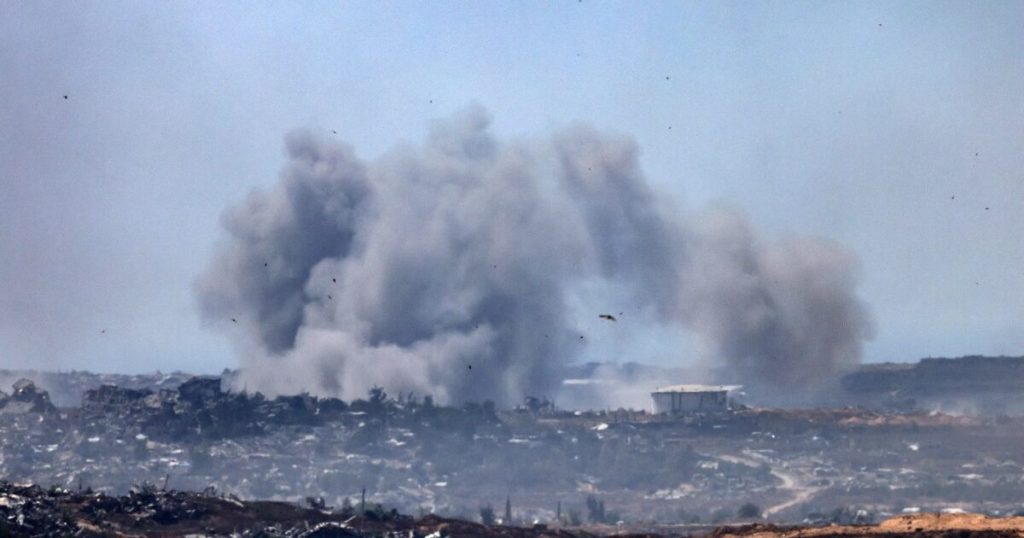The escalating conflict between Israel and Hamas in the Gaza Strip has witnessed a surge in violence, with Israeli airstrikes claiming the lives of at least 16 Palestinians on Friday, according to Gaza’s civil defense agency. This recent escalation marks a significant increase in Israeli military activity in the region, following a two-month ceasefire that ended in mid-March. The attacks, which primarily targeted the central and southern parts of Gaza, also resulted in dozens of injuries. Among the targets hit was Al-Awda hospital in northern Gaza, where three staff members were injured by bombs reportedly dropped from Israeli quadcopter drones. The Israeli military stated that their operations targeted “military compounds, weapons storage facilities, and sniper posts,” along with over 75 “terror targets” across the Gaza Strip.
The recent surge in violence comes amidst a backdrop of humanitarian crisis in Gaza, exacerbated by a two-month Israeli blockade that severely restricted the entry of essential supplies like food and medicine. While aid finally began trickling into the territory on Monday, the flow remains slow and hampered by logistical challenges and security concerns. The Israeli defense ministry body COGAT reported the entry of 107 humanitarian aid trucks on Thursday, but the UN’s World Food Programme (WFP) subsequently revealed that 15 of its trucks were looted in southern Gaza while en route to WFP-supported bakeries. WFP Executive Director Cindy McCain highlighted the glacial pace of aid delivery, emphasizing the urgent need to expedite the process to alleviate the suffering of Gazan civilians.
Since the resumption of major Israeli operations in Gaza on March 18, the death toll in the Palestinian territory has climbed to at least 3,673, according to Gaza’s health ministry. This figure contributes to a staggering overall war toll exceeding 53,800, with the vast majority being civilians. The ongoing conflict, triggered by Hamas’s October 2023 attack on Israel, has resulted in widespread devastation and humanitarian suffering in Gaza. The blockade, while partially lifted to allow for the entry of aid, continues to restrict the movement of goods and people, deepening the crisis.
The October 2023 Hamas attack, which precipitated the current phase of the conflict, claimed the lives of 1,218 people in Israel, mostly civilians. The attack also involved the capture of 251 hostages, a grim reminder of the human cost of this protracted conflict. Of these hostages, 57 remain in Gaza, with the Israeli military confirming the deaths of 34. The fate of the remaining hostages remains a critical concern for both sides, adding another layer of complexity to the already challenging humanitarian and political landscape.
The ongoing conflict highlights the urgent need for a comprehensive and sustainable solution to address the root causes of the Israeli-Palestinian conflict. The humanitarian crisis in Gaza, exacerbated by the blockade and the recent escalation of violence, demands immediate international attention and action. Efforts to facilitate lasting peace and security in the region must prioritize the protection of civilian lives, the provision of humanitarian aid, and the establishment of a framework for meaningful dialogue between the conflicting parties.
The looting of aid trucks underscores the fragility of the humanitarian situation and the challenges of delivering essential supplies in a conflict zone. It also highlights the need for enhanced security measures to protect aid convoys and ensure that assistance reaches those who need it most. The international community plays a crucial role in providing humanitarian support, mediating between the parties, and working towards a peaceful resolution to the conflict. The staggering death toll, the vast number of displaced civilians, and the persistent humanitarian crisis demand a concerted effort to end the violence and build a future based on peace, security, and mutual respect.














